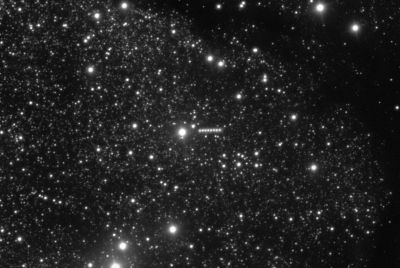3I/ATLAS Moves Like No Asteroid—Kaku Says Extra Energy Could 'Clinch' Alien Theory
Interstellar object's hyperbolic path and solar encounter spark debate over possible intelligent origin

A fast-moving interstellar object known as is approaching the Sun this week, and its behavior could challenge everything we know about cosmic visitors. First detected in July 2025, 3I/ATLAS is the third confirmed object to enter our solar system from interstellar space—following 1I/'Oumuamua in 2017 and 2I/Borisov in 2019. But unlike its predecessors, this one has sparked a fresh wave of speculation about intelligent life beyond Earth.
Kaku: 'If It Picks Up Extra Energy, Bingo'
Dr. Michio Kaku, a leading theoretical physicist and science communicator, has weighed in with a provocative hypothesis. In a recent interview, Kaku said:
'There is a split in the astronomical community. The majority says it's just a rock from outer space. It's the third object from outside our solar system. Another faction says perhaps it could be a visitor. This week it will be whizzing around our Sun, and if it picks up extra energy on its flyby, then there is extraterrestrial intelligence involved. On October 30th, we will track it. If it gets an extra boost of energy, it means we are being visited.'
Kaku's comments echo earlier debates around 'Oumuamua, which exhibited unexplained acceleration and lacked a visible tail—leading some scientists to propose it might be an artificial probe. With 3I/ATLAS, the stakes are higher: its hyperbolic trajectory and velocity suggest it's not gravitationally bound to the Sun and will exit the solar system permanently.
What Makes 3I/ATLAS Unusual?
3I/ATLAS is traveling at over 245,000 km/h and is projected to pass behind the Sun on October 29, temporarily out of view from Earth. Its orbit is hyperbolic, meaning it won't return, and its size—estimated to be up to 20 kilometers wide—makes it significantly larger than 'Oumuamua.
Astronomers are watching closely for any signs of anomalous acceleration or trajectory shifts during its solar encounter. If the object gains energy without a clear physical cause, it could suggest artificial propulsion or intelligent design—though such conclusions remain highly speculative.
🚨 BREAKING: MYSTERIOUS INTERSTELLAR OBJECT ARRIVES TOMORROW - NASA LOSING CONTROL OF THE NARRATIVE
— HustleBitch (@HustleBitch_) October 28, 2025
A Manhattan-sized object named 3I/ATLAS is racing toward the Sun right now and it’s moving in ways that no natural object should. NASA just quietly added it to the International… pic.twitter.com/yhH4v5nSWV
Scientific Caution and Competing Theories
NASA continues to classify 3I/ATLAS as a comet, albeit an unusually fast one. The agency has stated that it poses no threat to Earth and will pass at a safe distance. Other scientists argue that natural phenomena like outgassing or fragmentation could explain any changes in speed or direction.
Still, the object's behavior has reignited interest in interstellar science and the search for extraterrestrial intelligence. Harvard astrophysicist Avi Loeb, who previously proposed that 'Oumuamua might be a probe, has called 3I/ATLAS a 'black swan event' that could reshape our understanding of cosmic visitors.
What to Watch for on October 30
The critical moment arrives on October 30, when astronomers will resume tracking 3I/ATLAS after its solar flyby. Any unexpected acceleration or deviation from its projected path could fuel further debate—and possibly mark a turning point in space science.
Whether 3I/ATLAS is a natural object or something more, its journey through our solar system is a rare opportunity to study the unknown. As Kaku puts it, 'If it gets an extra boost of energy, it means we are being visited.'
© Copyright IBTimes 2025. All rights reserved.




















